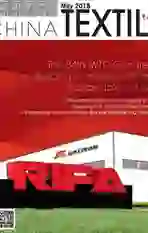Manufacturing sets its sights westwards
2015-12-31ByPeterAckroyd
By+Peter+Ackroyd
In the European summer of 2014 the wool industry began to feel a chilly wind of change blowing from China, as lower economic growth figures were compounded by a continued drive against corruption. While explaining in part the current lower wool price/demand syndrome in grower countries, Chinese domestic woes are not the only cause of this malaise. China, as a key supplier of knitwear and tailored clothing to the depressed EU market, has suffered from the polarization of the fashion business in Europe as the middle market seeks ascendancy and where possible, alternatives to Chinese supply. Asked for a forward view on China 2015 at the recent Pitti Immagine Uomo in Florence (13-16 January), European weavers were predicting a further 5%-10% drop in worsted sales for the all — important cut length suiting trade. A similar slide is expected to impact local Chinese worsted weavers.
Conversely, European weavers and spinners are optimistically predicting an increase in sales of yarn and fabric to China for domestic middle to upper middle market clothing brands who will use European mill label “ingredient” branding to add value and image to local mens and womens wear. Gold Woolmark weavers are particularly keen to capitalize on this trend.
Chinese manufacturers, now chief suppliers to UK and Germany, are counting on signs of growth in these two leading wool consuming nations. Indicators at “barometer of the nations clothing retailers” John Lewis in UK and Peek & Cloppenberg in Germany are as positive as they have been in five years. There are few signs of optimism in the rest of the EU, however. Italy, now supplying 25% of the worlds luxury mens wear, valued at 25 billion euros, is almost solely dependent on exports as domestic demand has all but disappeared. A similar situation persists in the French luxury womens wear sector.
But as the Euro dropped to below USD 1.19 in January, the weakest level in nine years, talk in the trade turned westward to the USA where economic indicators are decidedly more positive.
Several brands present at Pitti - a record 1200 in total - plan on reinforcing their presence in the USA in 2015. Weavers and spinners supplying all levels of the market predict double digit growth in both mens and womens wear sales this year. Little or nothing in wool is spun, woven, knitted or sewn in the USA, so clothiers in China, Canada and the EU are set to benefit from a welcome“windfall” that has been long illusive.
The biggest question for 2015, however, is whether the boom in Japanese woollen and worsted sales will last. Every wool grower nation, every spinner or weaver of wool across the globe has benefited immensely from the three year boom in Japanese business, which shows no sign of stopping. As no one in the industry can really explain the boom, no one can easily predict the bust, even as the yen weakens. Were this bubble to burst, as some Cassandras in the weaving trade fear it might, wool prices could see some significant falls in the course of the year.
杂志排行
China Textile的其它文章
- Exhibition
- Teijin to provide polyester kimonos for Japan pavilion at Expo Milano 2015
- EMO MILANO 2015:A booster for Sino-Italian economic cooperation
- Maredimoda Trend Board spring summer trend forecasting 2017
- International Textile Fair hits a high note with its second season
- Expression of new era—reborn
